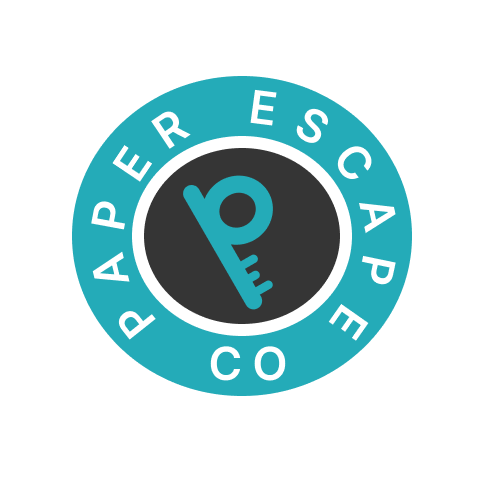About
Fast forward another year or two and I wanted to follow up that game with another escape room as a gift. This time I didn't want to have to use all the physical objects. So, I came up with the idea of developing a game using just paper. Then I got to work on my next project. I had the idea of chasing a kidnapper around the world and they would have to solve clues to find out where they were brought and who the kidnapper was. Coming up with the clues and puzzle was the fun part. Making sure it was all cohesive and keeping track of everything was a challenge. But after quite a while of work testing and tweaking, I finally had a finished product. I even made the kidnapper a person that our group all knew, so it was a fun surprise for them. Again, this game turned out to be a hit.
The next year, I thought I would make one more sequel. So back to the drawing board. I kept with the same idea of the kidnapper chase. This time I added more puzzles and made them even more of a challenge. After even more testing and refining it, the sequel was done. I had another hit on my hands.
After that, I figured I was done making games. Then a couple years had passed and I started to think that if the family had enjoyed my games so much maybe others would too! So, after toying with the idea for a while, I had made up my mind to clean the games up and make them suitable for sale.
Little did I realize that would be a bigger process than I expected. One main reason for that was because when I made my games for the family, I had no real reason to keep track of how it was put together. Since I was the game master, I was able to guide everything along. But making the game for others required a lot more effort. I had to make a series of hints for every puzzle. I had to develop a setup and how to play guide. I had to find a proper desktop publishing software that allowed me to properly lay out the designs. I initially was trying to use Microsoft Word, but I quickly realized that wasn't the proper tool for the job. After some searching, I found a great tool that let me do exactly what I needed.

Then I had to figure out how all the clues would be laid out on the page. I also quickly realized that I needed to somehow identify which clues were what.

Simple to do when I was the clue master originally, but any random person wouldn't know how that worked. So, I came up with identifying them with a number.

(Early design phase)
After many weeks of testing, I felt I was in a good place where it was as ready as it was going to be. Then I put the game up for sale on Etsy. It took me 18 days for me to make my first sale. Then sales continued to start picking up regularly. I got my first review about a month later and it was 5 stars and very positive. So, after that I knew I had something good. I then decided I would do the same thing for my second game, and I put that up for sale also.

(Early design phase)
Right from the start I knew I needed to stand out from the other printable escape room makers that were already on the market. One way I came up with to do that is free customization. I have always been willing to work with the buyers to customize different elements of the games. It makes it exciting for the game host and a fun surprise for the game players when they come across the customizations.
Then I knew I needed to make more original games. So, I started the process all over again. Once I had the draft version done, I had some family and friends try it out and give feedback and I would make adjustments.
After making several more adult escape rooms I wanted to expand out to selling kids escape rooms next. I came up with a game for 5-8 year olds. After developing several of those I developed a game for 8-12 year olds.
After finding success on Etsy, I wanted to expand out and sell my games on my own website which will give me more flexibility to serve my customers. I plan to continue to keep developing new game with new themes.
